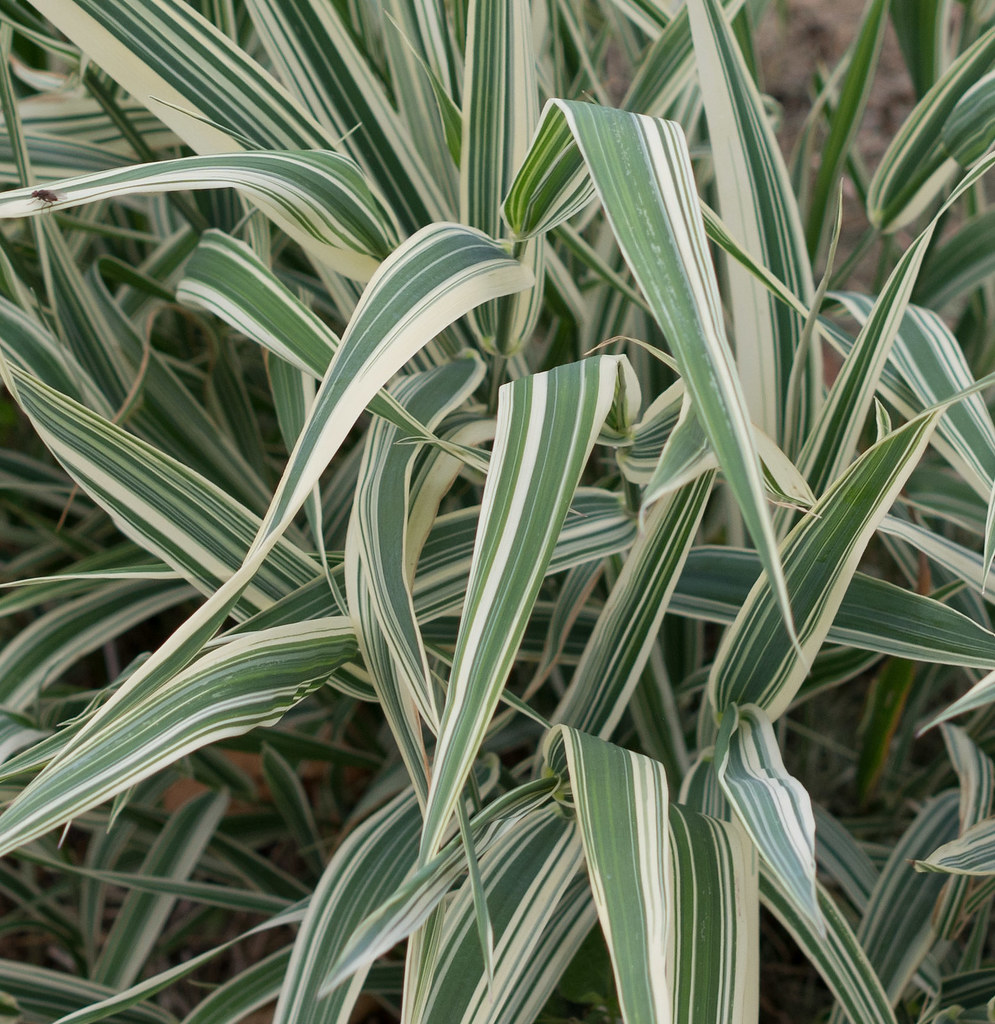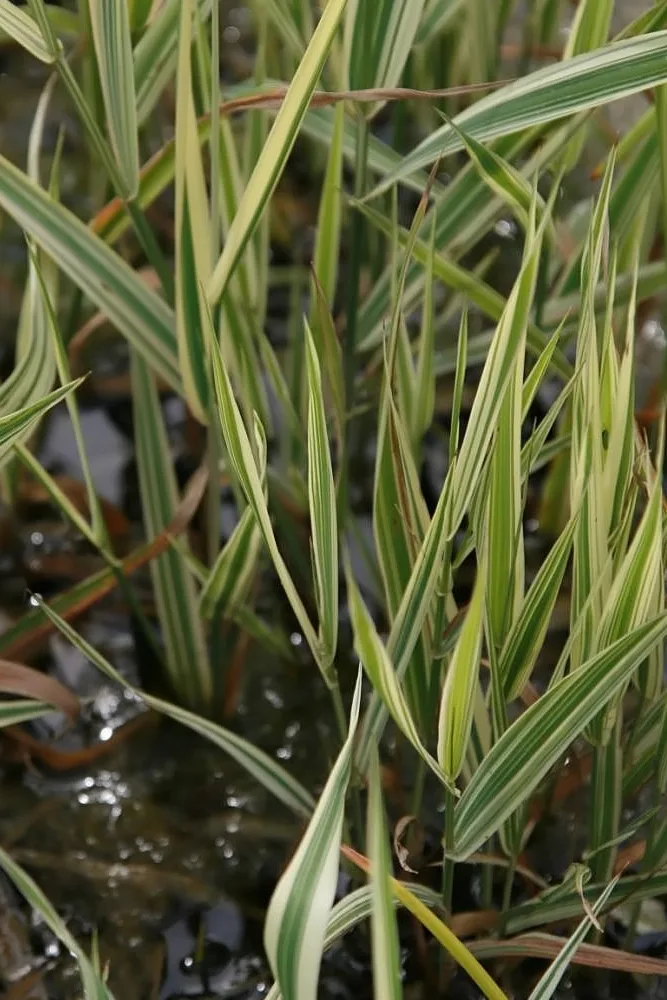Ribbon grass, scientifically known as Phalaris arundinacea, is a perennial grass species belonging to the Poaceae family that adds a beautiful touch to any garden or landscape.
Also known as Reed Canary Grass, this plant is commonly used in landscaping to add texture, color, and movement to gardens, borders, and water features.
Ribbon grass (Phalaris arundinacea) is native to Europe, Asia, and North Africa. It has been introduced to various regions around the world and is cultivated for its ornamental qualities.
| Characteristic | Description |
|---|---|
| Scientific Name | Phalaris arundinacea |
| Common Name | Ribbon Grass, Reed Canary Grass |
| Family | Poaceae (Grass family) |
| Type | Perennial grass |
| Height | Typically 2 to 4 feet, can reach up to 6 feet |
| Foliage Color | Variegated, often with green and white stripes |
| Blooms | Panicles of greenish flowers in late spring to summer |
| Sun Exposure | Full sun to partial shade |
| Soil | Moist, well-drained soil; tolerant of various soil types |
| Watering | Prefers consistently moist conditions |
| Hardiness Zones | USDA Zones 4-9 |
| Landscape Use | Ground cover, borders, wetland restoration |
| Invasive Potential | Can be invasive in certain regions, check local guidelines |
| Maintenance | Moderate; may need containment in garden settings |
| Special Features | Variegated foliage adds ornamental appeal |
| Wildlife Attraction | Provides habitat for birds and insects |
Choosing the Right Location
Before we dive into the actual planting process, it is important to choose the right location for your ribbon grass.
This grass thrives in areas with full to partial sun, so look for a spot in your garden that receives at least 6 hours of direct sunlight each day.
Additionally, ribbon grass is adaptable to a wide range of soil types, but it prefers moist, well-draining soil. Avoid areas with standing water or excessively dry soil.
Preparing the Soil
To give your ribbon grass the best chance of thriving, it is crucial to prepare the soil properly. Start by clearing any weeds or debris from the area where you plan to plant the grass.
Loosen the soil with a garden fork or tiller to a depth of about 8-10 inches. This will ensure optimal root penetration and allow for proper drainage.
If your soil is heavy or clay-like, consider incorporating organic matter such as compost or well-rotted manure to improve its texture and fertility.

Planting Your Ribbon Grass
Once you have prepared the soil, it’s time to plant your ribbon grass. Follow these steps to ensure successful establishment:
Digging the Hole:
Dig a hole that is slightly larger than the root ball of your ribbon grass plant. The hole should be deep enough to accommodate the entire root system.
Spacing:
Space your plants about 12-18 inches apart to allow for proper growth and spread. This will help prevent overcrowding and competition for resources.
Placing the Plant:
Gently place the ribbon grass plant into the hole, ensuring that the crown (where the roots meet the stems) is level with or slightly above the soil surface. This will prevent the crown from rotting and promote healthy growth.
Backfilling:
Fill the hole with soil, firming it gently around the roots to eliminate air pockets. Avoid packing the soil too tightly, as it can hinder root growth.
Watering:
Give your newly planted ribbon grass a deep watering to settle the soil and promote root establishment. Keep the soil consistently moist, but not waterlogged, during the initial weeks after planting.
Mulching:
Apply a layer of organic mulch, such as shredded bark or straw, around the base of the plants. This will help retain moisture, suppress weed growth, and regulate soil temperature.
Caring for Ribbon Grass
After planting your ribbon grass, ongoing care is essential for its health and vitality. Follow these guidelines to ensure optimal growth and longevity:
Watering
Ribbon grass prefers consistently moist soil, so regular watering is necessary, especially during dry periods. Aim to provide about 1 inch of water per week, either through rainfall or manual irrigation.
However, be cautious not to overwater, as excessive moisture can lead to root rot. Monitor the soil moisture level regularly and adjust your watering schedule accordingly.
Fertilizing
To maintain healthy growth and vibrant foliage, it is beneficial to fertilize your ribbon grass annually. Apply a balanced slow-release fertilizer in early spring or early fall.
Following the manufacturer’s instructions for proper dosage and application. Avoid over-fertilizing, as it can result in excessive leaf growth and a weakened root system.
Pruning
Ribbon grass is a spreading grass that can become invasive if left unchecked. To prevent it from taking over your garden, regular pruning is necessary.
In late winter or early spring, cut back the foliage to about 2-3 inches above ground level. This will rejuvenate the plant and promote fresh growth.
Additionally, remove any dead or damaged stems throughout the growing season to maintain a tidy appearance.

Managing Spread
If you want to control the spread of your ribbon grass, consider planting it in containers or using barriers such as landscape fabric or metal edging.
This will prevent the rhizomes from spreading uncontrollably and invading adjacent areas of your garden. Regularly monitor the surrounding areas for any rhizomes or runners that escape the barriers, and promptly remove them to prevent further spread.
Pests and Diseases
Ribbon grass is generally resistant to pests and diseases, making it a low-maintenance option for your garden.
However, occasional pest issues, such as aphids or grasshoppers, may arise. Monitor your plants regularly and take appropriate action if you notice any infestations. Organic insecticides or physical removal can help manage these pests effectively.
Types of ribbon Grass
Phalaris arundinacea ‘Picta’ (variegated ribbon grass):
Features: This variety is known for its attractive variegated leaves with green and white stripes. It adds a bright and dynamic element to the garden landscape.
Phalaris arundinacea ‘Feesey’ (Feather Reed Canary Grass):
Characteristics: ‘Feesey’ is appreciated for its upright growth habit and drooping stems. It is more compact than some other varieties, making it suitable for smaller garden spaces.
Phalaris arundinacea ‘Dwarf Garters’:
Features: ‘Dwarf Garter’ is a more compact variety of ribbon grass, making it suitable for borders and smaller garden spaces. It retains the diverse foliage of the species.
Phalaris arundinacea ‘Sunshine’ (Golden Variegated Ribbon Grass):
Characteristics: ‘Sunshine’ is known for its golden-yellow appearance, which brings a warm and sunny glow to garden beds. It is especially attractive when planted in full sun.
Phalaris arundinacea ‘Castlegar’ (Castlegar Ribbon Grass):
Characteristics: ‘Castlegar’ is admired for its green and white appearance and ability to thrive in a variety of soil conditions. It can be used in both traditional and contemporary garden designs
Conclusion
Planting and caring for ribbon grass can bring a touch of elegance and visual interest to your garden or landscape.
By choosing the right location, preparing the soil adequately, and following proper care guidelines, you can enjoy the beauty of this versatile grass throughout the seasons.
Remember to water regularly, fertilize appropriately, and prune to keep your ribbon grass healthy and vibrant.
With a little love and attention, your ribbon grass will flourish and become a cherished aspect of your outdoor space. So go ahead, dig in, and get started on creating a stunning display with ribbon grass today!
People also ask
Is ribbon grass planted indoors or outdoors?
Ribbon Grass (Phalaris arundinacea) is typically grown outdoors as a landscaping plant. It is often used as ground cover, in borders, or for wetland restoration. While it can be grown in containers, it is generally not a common choice for indoor cultivation.
What is ribbon grass called?
Ribbon Grass is also known as Reed Canary Grass. Its scientific name is Phalaris arundinacea.
How big does ribbon grass get?
Ribbon Grass can reach a height of 2 to 4 feet, though it has the potential to grow up to 6 feet under certain conditions.
What is the use of canary grass?
Canary Grass, including Ribbon Grass (Phalaris arundinacea), is used for various purposes. It is often planted for erosion control, in wetland restoration projects, and as an ornamental grass in landscaping due to its attractive variegated foliage.
Is ribbon grass invasive?
Ribbon Grass has the potential to be invasive in certain regions. It can spread rapidly and outcompete native vegetation.
Before planting Ribbon Grass, it’s advisable to check local regulations and guidelines to ensure that it won’t negatively impact local ecosystems.
Some cultivars, like the variegated varieties, are less likely to spread aggressively compared to the non-variegated types.

